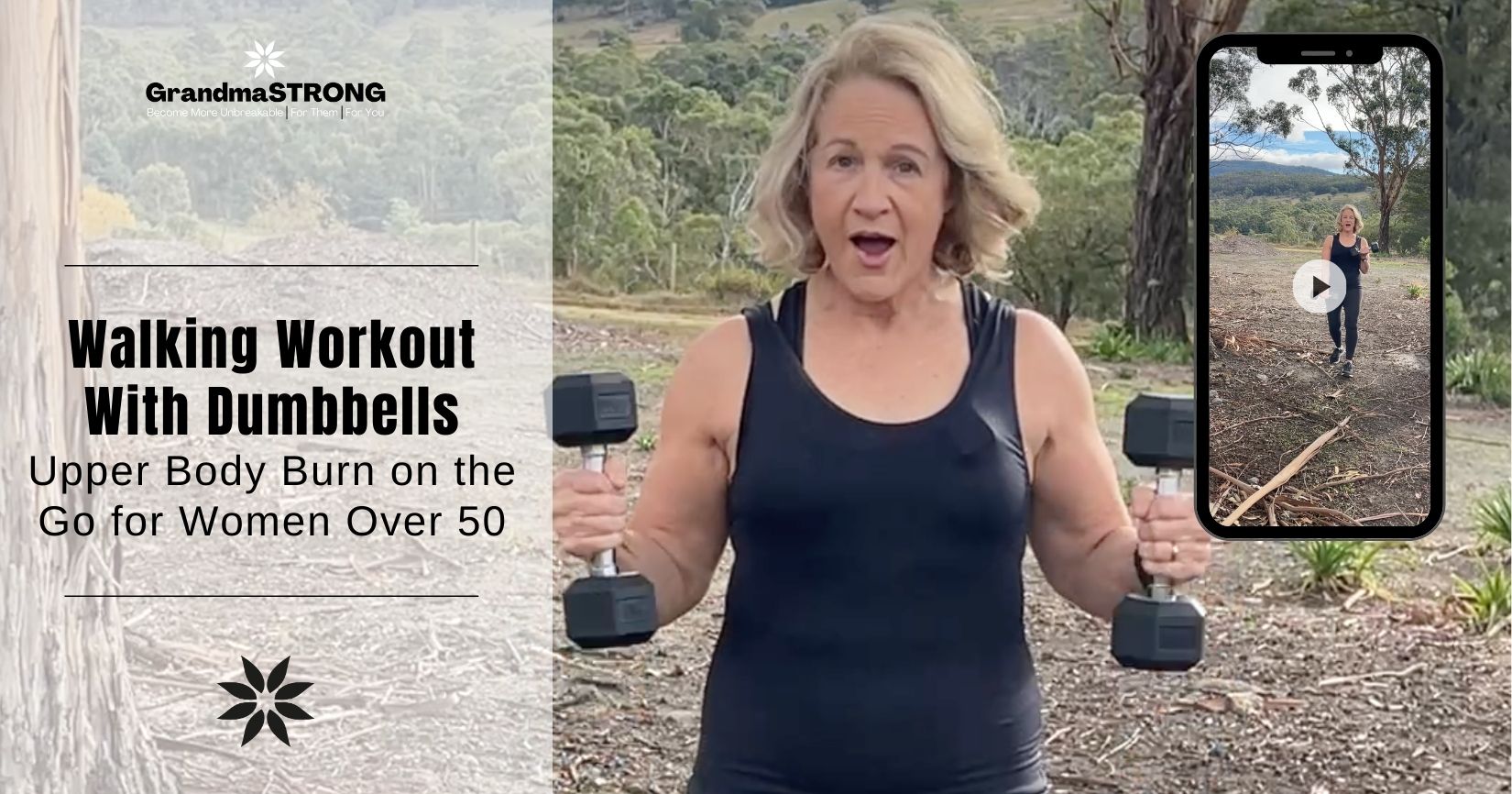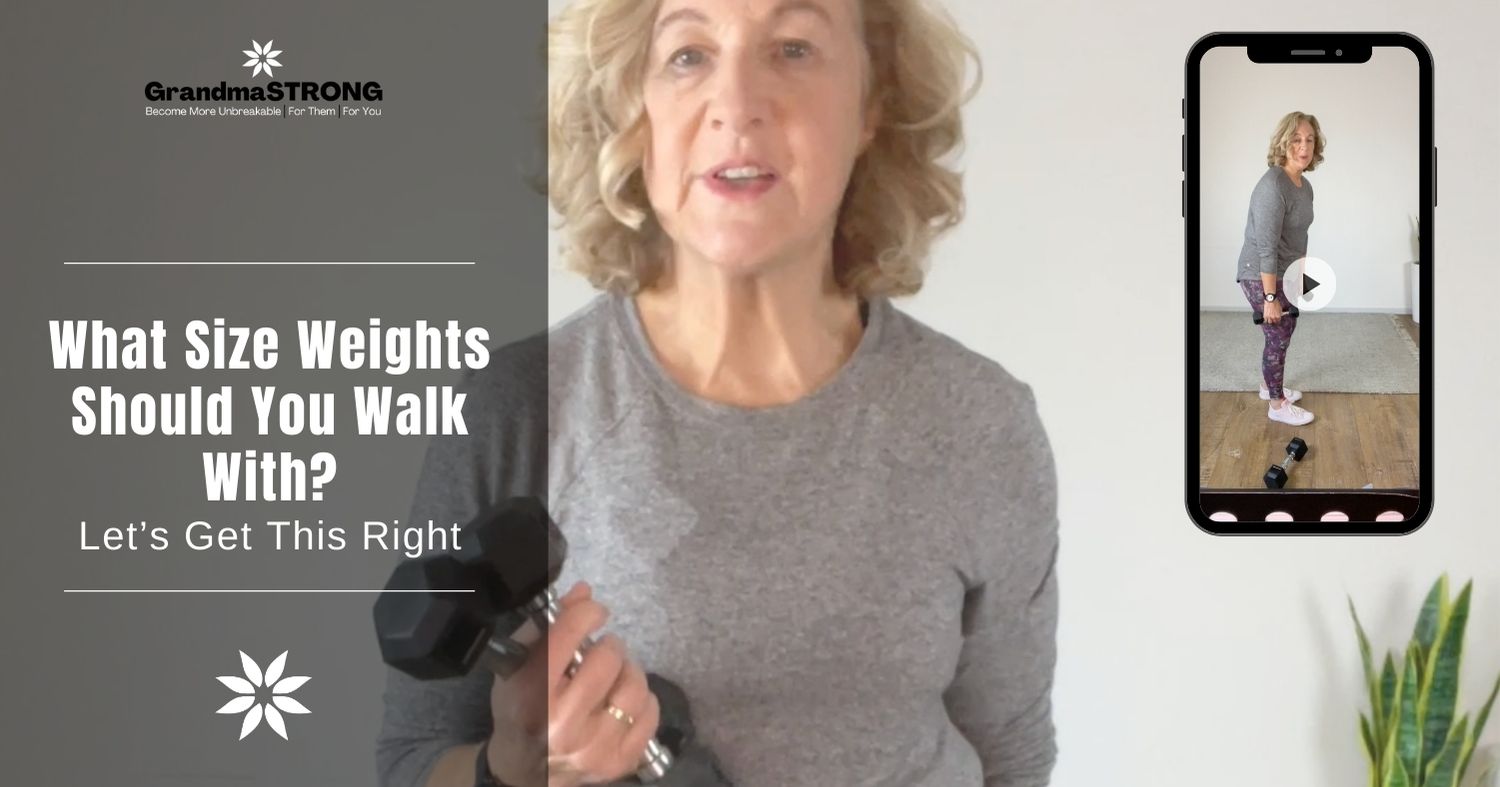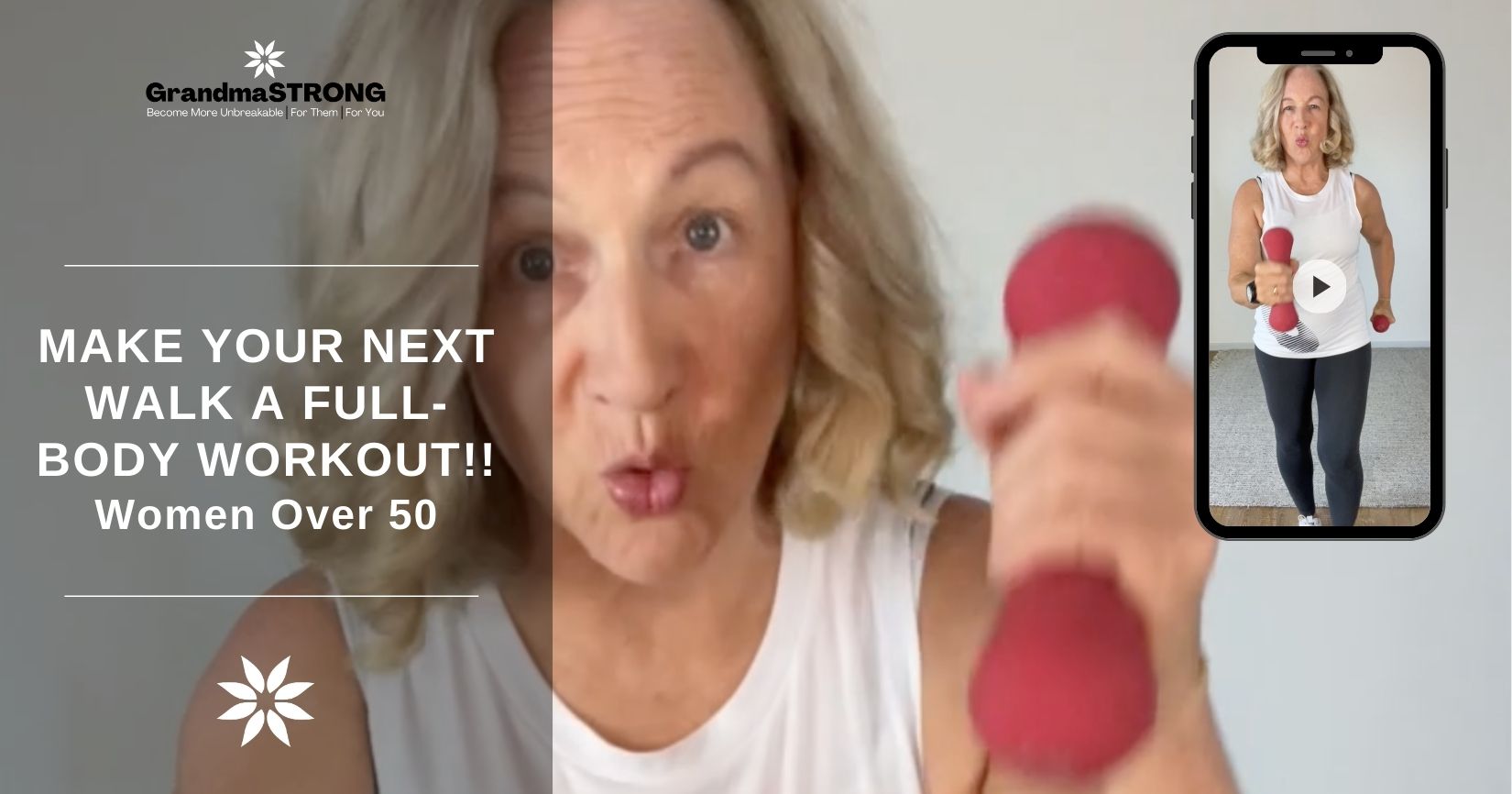
Hey there, what's one movement exercise that gives you bang for your buck and works everything in your entire body, from your upper body, through your grip strength, your arms, your core, your legs, and your butt?
It's a carry.
There are so many ways that we can carry, and carrying isn't just an exercise, it's a life skill.
Real-Life Reasons we Carry & Related Strength Carry Movement Exercises
How many different ways do we carry things throughout the day without even thinking about form, technique, load, or endurance?
Take for example these 4 typical daily carries and a related carry movement exercises to strengthen them:
- Carrying groceries bags in each arm to our car - Farmer's Cary
- Carrying a grandkid on our hip or front - Loaded Carry
- Carrying our suitcase in the airport because the wheels have broken - Suitcase Carry
- Carrying your kayak to the car to load on the roof - Overhead or Racked Carry
These moments are where practising carry movement exercises really pays off. Let's take a look at these four functional types of carries in detail, and why they matter.
Watch: Grandma's Carry Everything - 4 Exercises That Will Keep You Strong
Ready, let's Jump Into the 4 Key Carry Movement Exercises for Women Over 50, Lesson:
#1 Suitcase Carry
Real-Life Example:
Carrying our suitcase in the airport because the wheels have broken. This one-sided, offset load is exactly what the suitcase carry trains for, and demands strong obliques and anti-tilt core control. It’s how we stay upright and supported when daily life activity movements want to pull us off balance.
Why it's Powerful:
- Challenges your core to stay upright
- Prevents leaning or twisting toward the heavier side
- Trains real-life tasks like carrying a child or single bucket
Key Technique Tips:
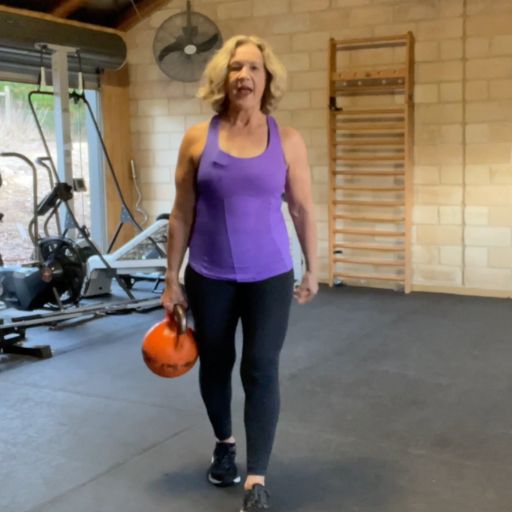
So this is a one-sided walk, particularly when you get into heavier weights, you're likely to want to counterbalance and lean away from the bigger weight. And so it's a great one to really get that core functioning, but remember to change to the other arm as we walk along, otherwise fatigue will compromise form.
Your aim is to:
- Stand tall and stand upright
- Walk with shoulders back and chest open, and core is on
- Imagine you're the Queen of Sheba as you're walking along - posture matters
- Use a mirror if needed to view yourself to see if you're leaning as you suitcase carry
- Switch hands as you train both sides evenly
Ensure you use progression when training for suitcase carry movement exercises, IE. Start light and progress up 1kg increments. Also, don't just train this carry movement for load, consider endurance, eg we take a kettlebell on most of our 30+ minute dog walks, swapping hands as we go.
Want to know why I recommend using your dog walks as a great opportunity to suitcase or farmer's carry train? Click link/Image
#2 Farmer's Carry
Real-Life Example:
Carrying grocery bags in each hand to the car. This is a classic real-life example of the Farmer’s Carry, carrying equal (or sometimes uneven) weight in both hands.
Why it's Effective:
- Builds grip strength, uper body strength, and stability
- Mimics real-life: groceries in both hands, buckets, bags, or gear
- Prepares you for carrying even when weights are uneven
Key Technique Tips:

Farmer's walks is what I do most times now I take the dog for a walk, I like to load myself up with a six kilo in each arm, so you can be even or you can be uneven, I quite like the uneven ones if I'm working out in the gym though.
In the picture I'm carrying a 12 and an 8, because in life if we're carrying the groceries, or carrying grandkids gear, or buckets of water, one might be fuller than the other.
So your aim is to:
- Avoid leaning toward the heavier side
- Switch hands to make to make the weaker work too, or give the fatiguing side a rest
- Include it in your everyday training routine
Again, ensure you use progression when training for suitcase carry movement exercises, IE. Start light and progress up 1kg increments. Also, don't just train this carry movement for load, consider endurance, eg like the dog walks mentioned above.
Here's some tips if considering walking with weights, Click link/Image
#3 Loaded Carry
Real-Life Example:
Carrying a grandkid, potted plant, or bag on your front. This directly mimics the Loaded Carry holding something bulky and often awkward in front of the body.
Why it's important:
- Mimics common tasks like carrying a grandchild, laundry basket, or a baby in a sling
- Builds arm, core, and glute strength
- Reinforces good lifting posture
Key Technique Tips:
Now we can have our load in all sorts of ways, we can have it a bit lower, we can have it a bit higher on our chest, we can have it on one shoulder, we can have it on one shoulder, gosh we can have it all over the place, but a loaded carry is usually in the front.
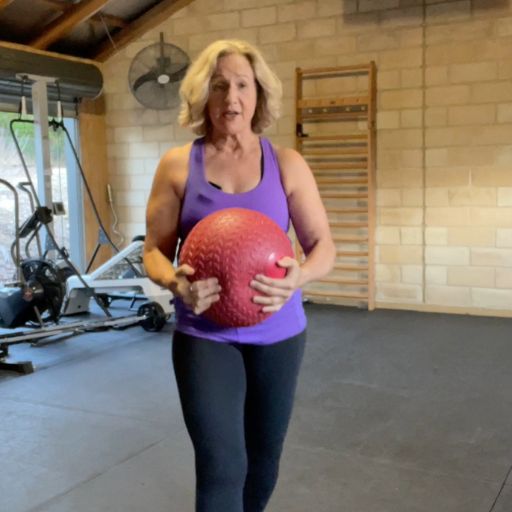
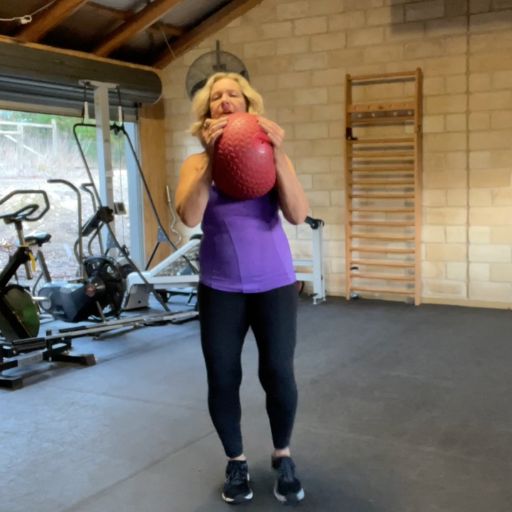
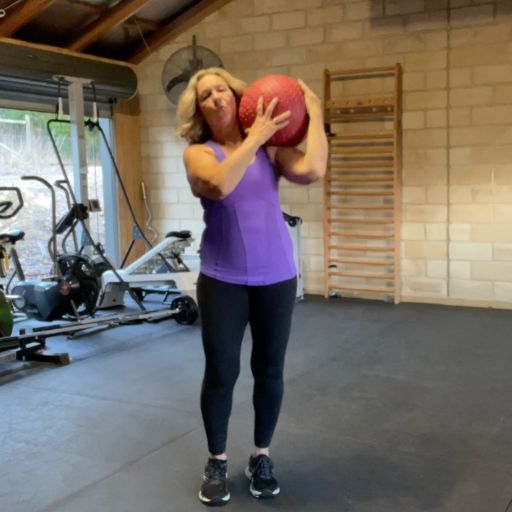
- Bend your legs, keep your back straight
- Brace your core and hold the load close to your body
- Carry, low, high on chest, or even on one shoulder (this last is close to a racked carry)
- Awkward objects (no handles) adds a challenge
Again, ensure you use progression when training for suitcase carry movement exercises, IE. Start light and progress up 1kg increments. NOTE: This is not one for the dog walk though.
#4 Overhead or Racked Carry
Real-Life Example:
Carrying your kayak to the car to load on the roof. This scenario often requires Racked Carry strength (close to the chest or shoulder) or even brief Overhead Carry work when manoeuvring tight stairwells.
Why it Matters:
- Trains shoulder stability and core strength
- Prepares you for lifting or reaching while holding something
- Elevates your posture and balance under tension
Key Technique Tips:
And if we want to get extra shoulder stability, I can have an over arm grip, I can be walking along with my arm up here or here, so I can be taking an overhead grip.
Now if that's way easy for you, you may want to take a kettlebell and either here with your elbow right in by your rib, you can be walking along or you can be walking along with your arm up in the air and this arm is right close to your ear and you're trying to stay upright.

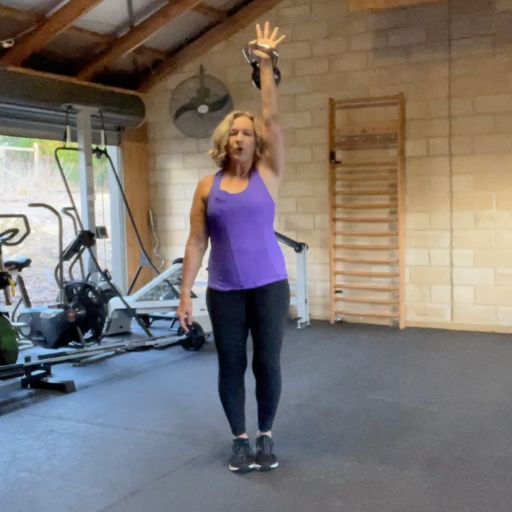
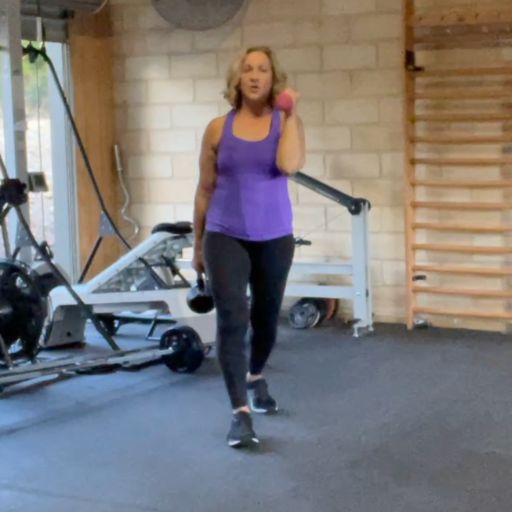
- Carry with elbow tight by your rib (racked position
- Carry with arm overhead close to your ear
- Or combine the racked or overhead with a suitcase
Again, ensure you use progression when training for suitcase carry movement exercises, IE. Start light and progress up 1kg increments.
Final Thoughts
There are so many ways to train carrying, and they're all functional, effective. and everyday life empowering.
Whether you're prepping your body for grandkid adventures, gardening tasks,, or simply being able to load your car confidently, carry movement exercises are a must have in your strength training routine.
"I love carrying because it really does give you everything you need in one go."
Coach Sheree




